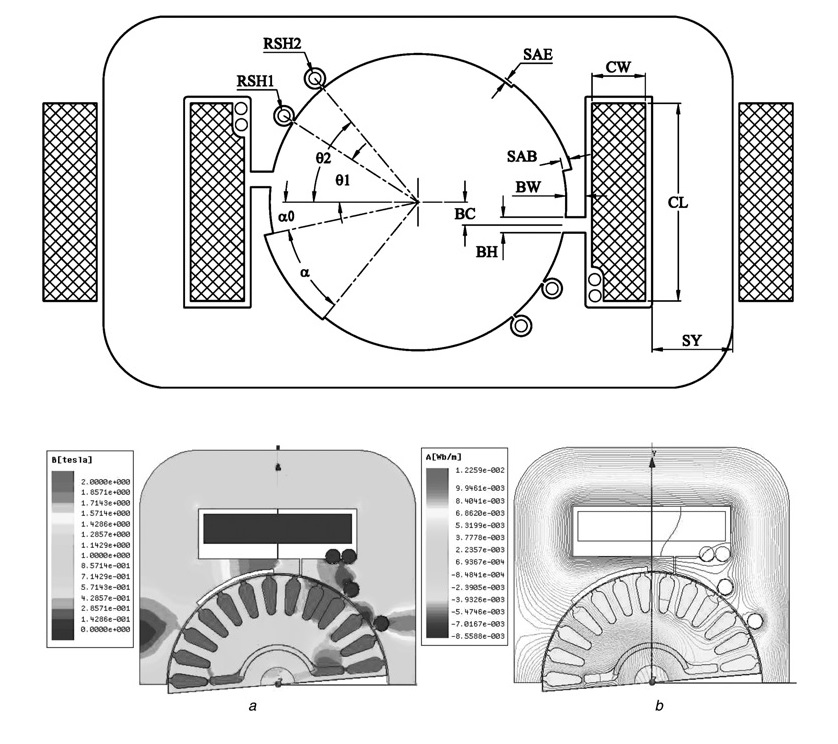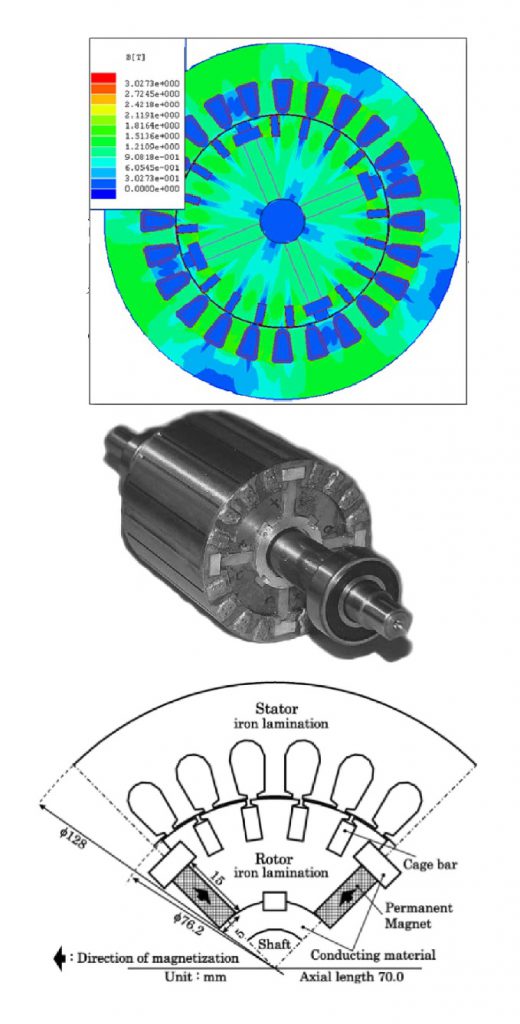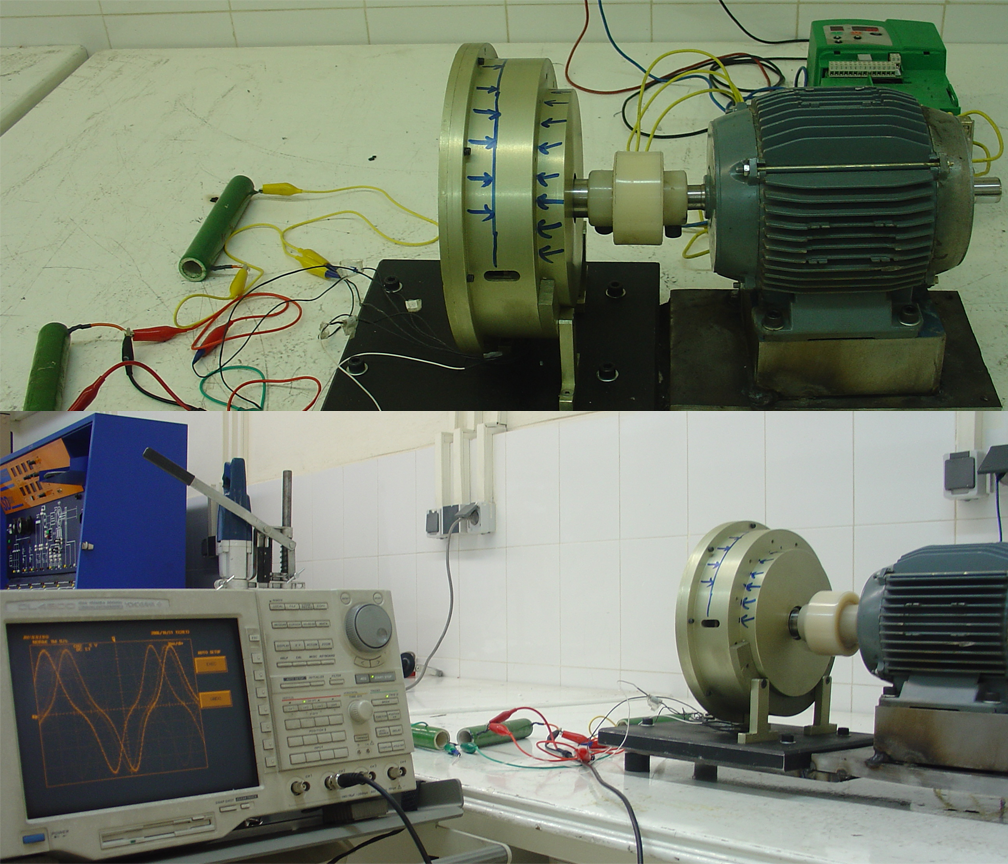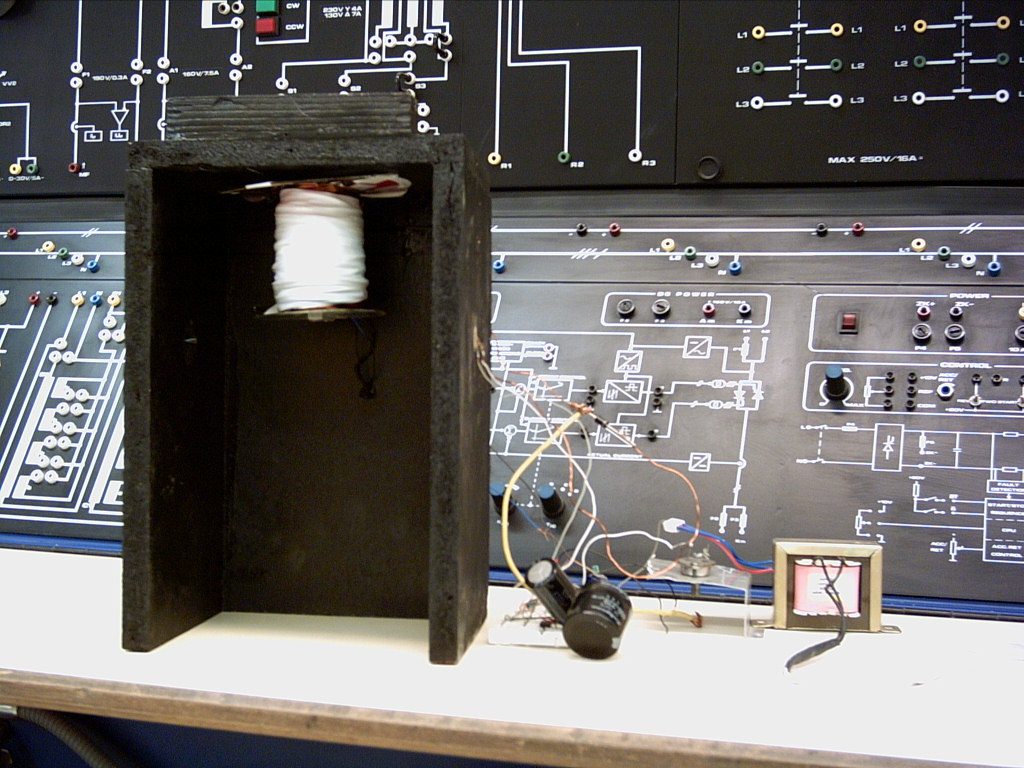Line-Start Permanent Magnet Motor with Slotted Solid Rotor
Milad Niaz-Azari and Mojtaba Mirsalim
(2010-2013)
This study presents a line-start permanent-magnet motor with high synchronisation capability using a slotted solid rotor. With slotted solid rotors, a much better magnetic flux and current penetration into the rotor is achieved. Moreover with additional magnetic flux penetration into rotor core, the motor slip decreases and electromagnetic torque near synchronous speed will increase. Consequently, the proposed motor can reach synchronous speed under higher load torques and inertias. Two-dimensional finite-element method has been implemented in order to confirm this new idea. Finally, a four-pole, 250 V, 1500 rpm, 1050 W, three-phase synchronous motor with slotted solid rotor is designed and prototyped to experimentally validate the capabilities of the proposed motor.

Design, optimization , analysis, and experimental verification of a new line-start permanent magnet synchronous shaded-pole motor
Sadegh Shamlou and Mojtaba Mirsalim
(2008-2012)
In this study, an optimal design of a new line-start permanent magnet synchronous shaded-pole motor (LSPMSSPM) is proposed. A genetic algorithm optimisation method based on transient two-dimensional finite-element method (FEM) is applied to reach a global optimum design. Advantages and challenges of the proposed LSPMSSPM are investigated, and its performance characteristics are calculated. Efficiency, power factor, starting behaviour and cost as important key factors are analysed. Finally, FEM results are verified with experimental tests.

Axial High Torque Limited Angle Motor with Slotless Axial Flux Structure
Parham Hekmati and Mojtaba Mirsalim
(2009-2011)
This project presents a novel limited-angle torque motor as a modified double-sided slotless axial-flux permanent-magnet motor (DSAPM) with a trapezoidal cross section for the stator. A new approach to the magnetic equivalent circuit and semi-three-dimensional (3-D) analytical armature reaction field modeling for the proposed actuator are derived and implemented in the design process. Designing is done based on avoidance of saturation at maximum torque production to prevent distortion of torque characteristic in short-time operations. Next, finite-element analysis is utilized to confirm the accuracy of the design equations and to compare the proposed actuator with conventional industrial limited-angle torque motors and the conventional DSAPM structure. Finally, the proposed actuator is prototyped and its experimental results are presented and discussed. Finite-element analysis and experimental data show better accuracy of the model, electromagnetic capability improvements by this new structure and excellent applicability of the proposed rotary actuator.

Line-Start Permanent-Magnet Motors: Significant Improvements in Starting Torque, Synchronization, and Steady-State Performance
Ali Akbar Damaki and Mojtaba Mirsalim
(2009-2011)
We present a new scheme to improve the starting torque and synchronization capability of line-start permanent-magnet motors based on pole changing winding. Pole changing at start-up neutralizes the magnetic influence of permanent magnets and, therefore, leads to the elimination of braking and pulsating torques, and enhances the starting torque. Our scheme also solves the synchronization problem. We used finite-element analysis to validate the scheme. The simulation results show that the method leads to a high starting torque, good synchronization, and excellent steady-state performance.

High-Speed Permanent Magnet Motor
Mehran Mirzaei and M. Mirsalim
(July 2006 – October 2006)
In this independent project, a New High Speed (20,000 rpm) Permanent Magnet Motor was designed, constructed, and tested.

Axial Flux Disk Permanent Magnet Generator
Mohsen Hosseini and M. Mirsalim
(July 2005 – September 2005)
In this M.S. project, a New Axial Flux Disk Permanent Magnet Generator was designed ,constructed, and tested.

Electromagnetic Levitation
M. Mardaneh and M. Mirsalim
(July 2005 – September 2005)
In this course project an Electromagnetic Levitation Device was designed, constructed, and tested.

